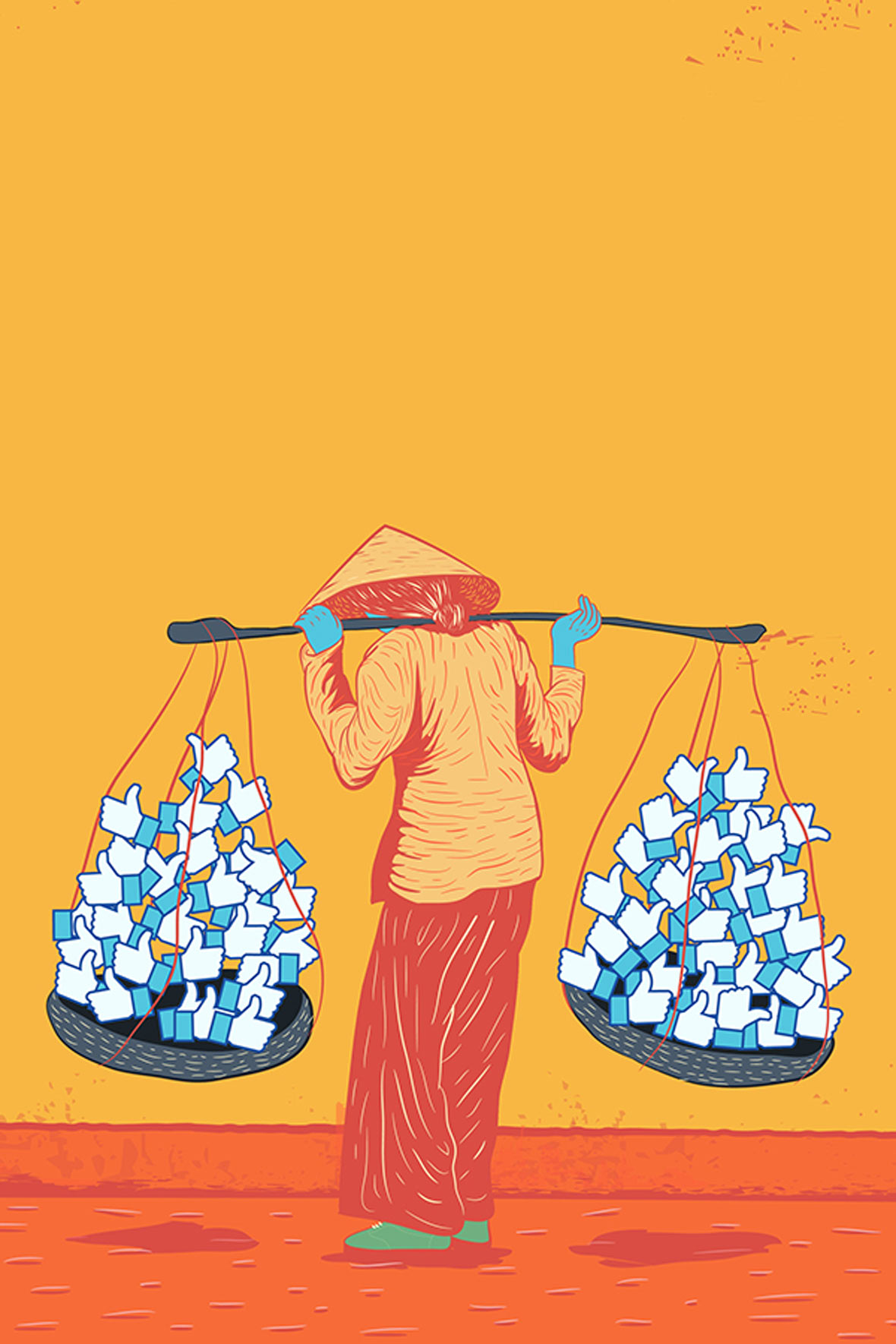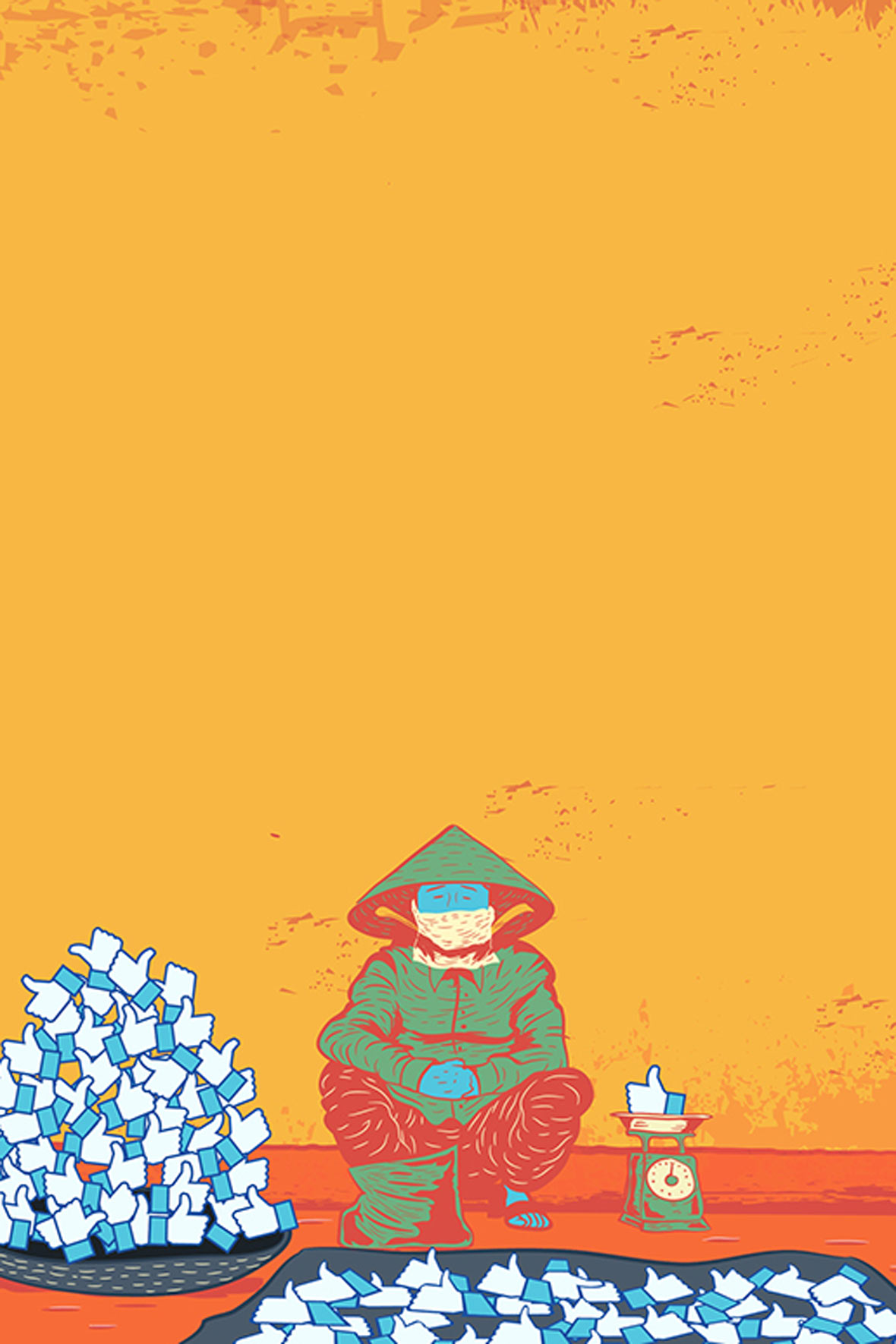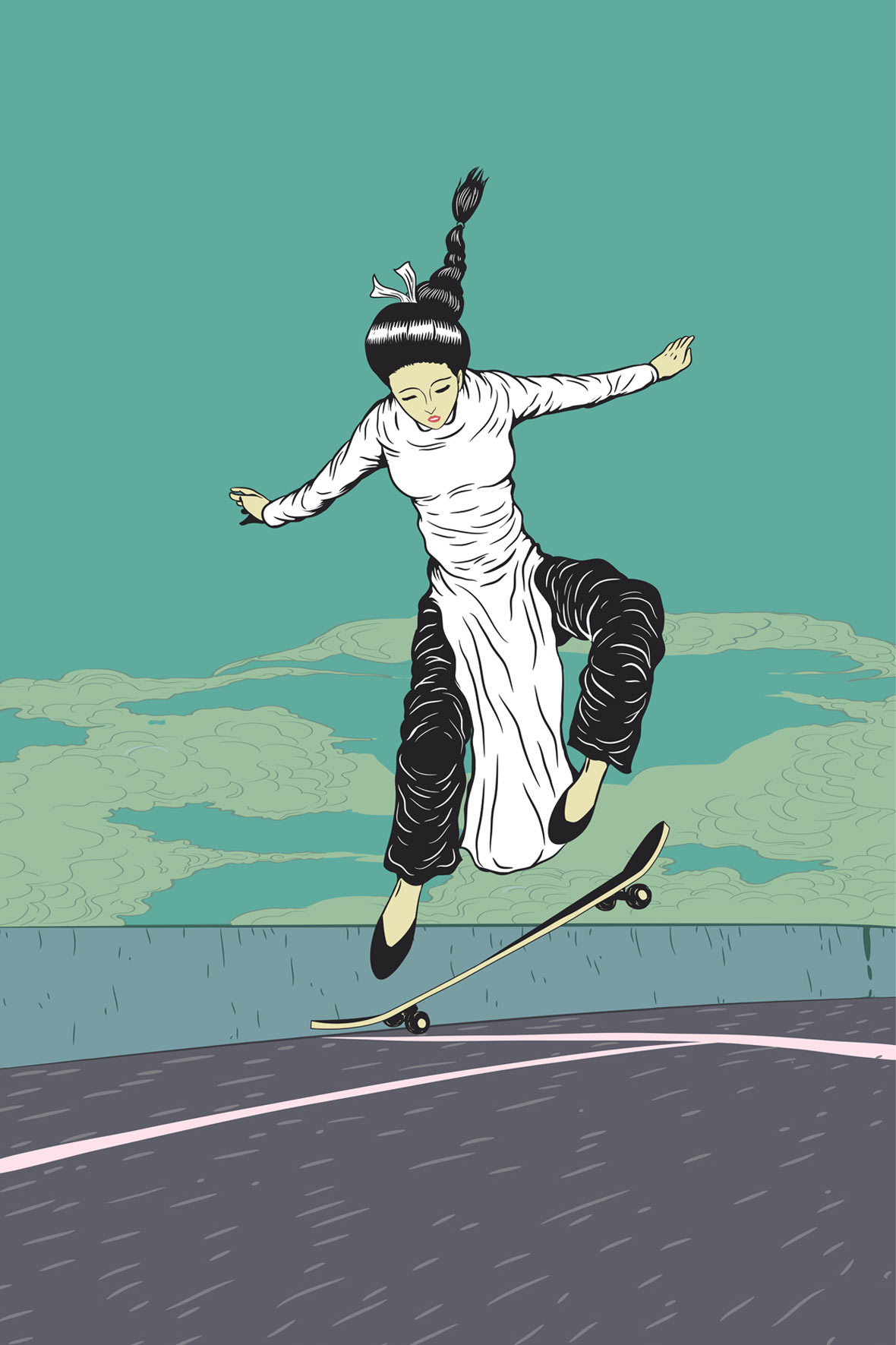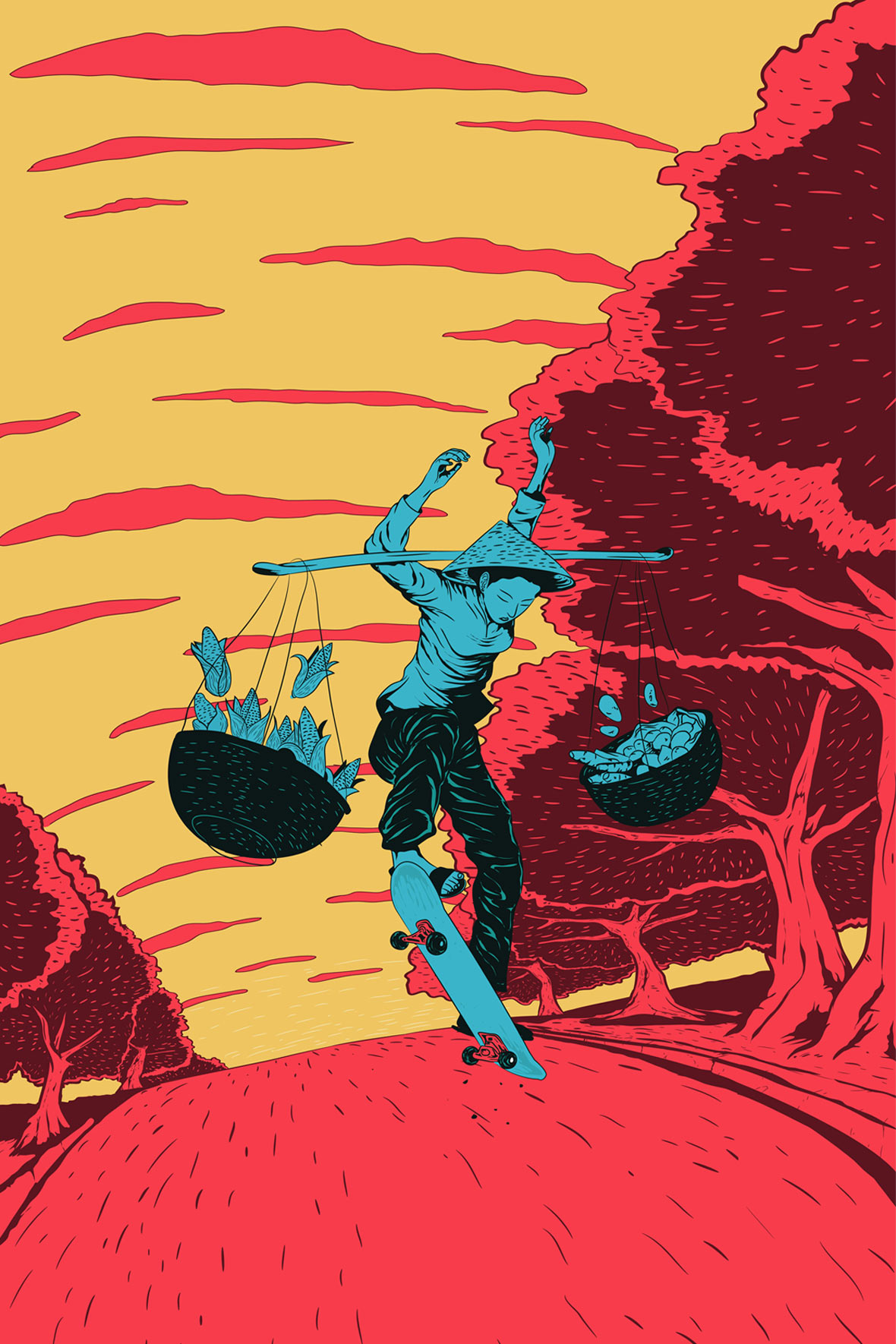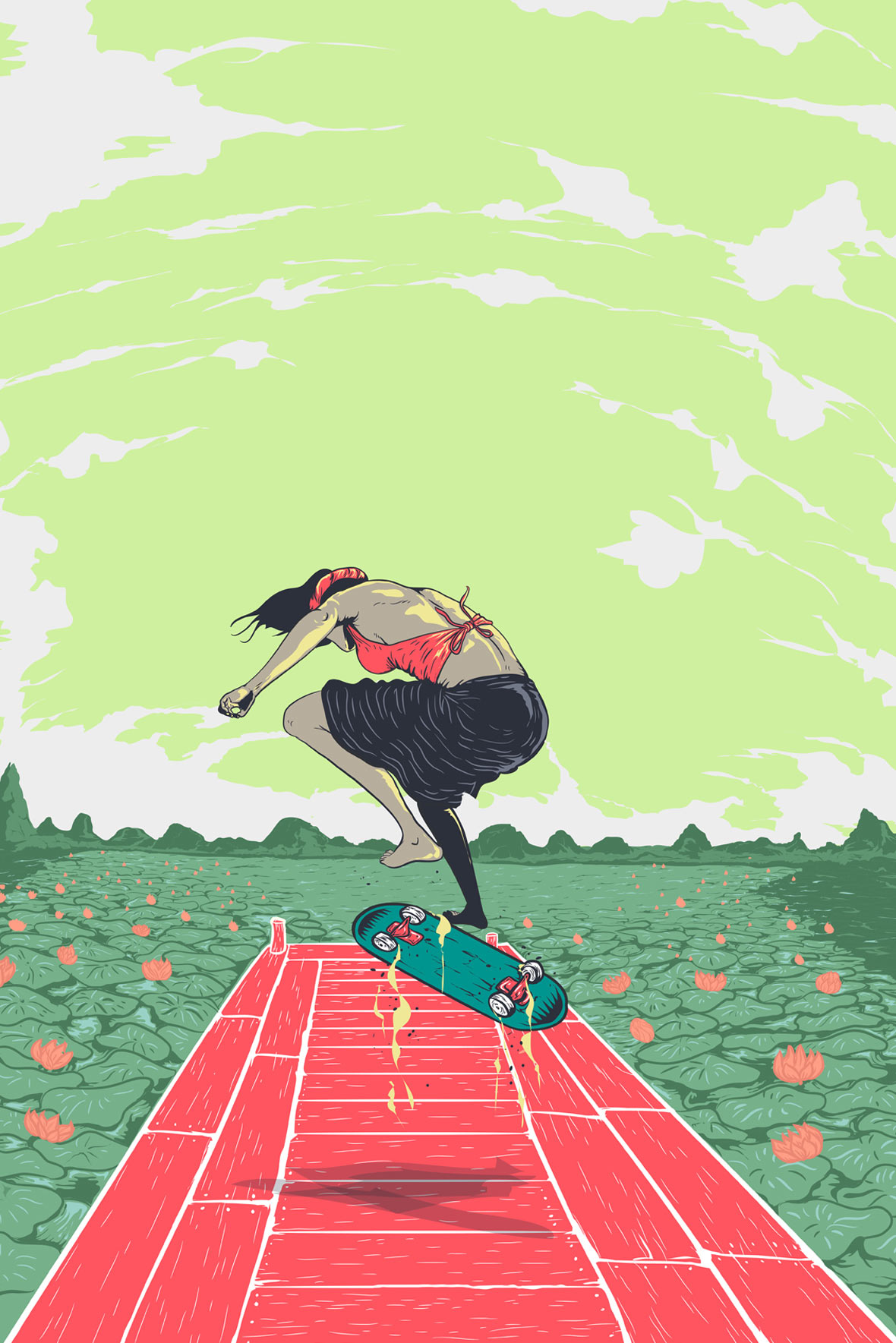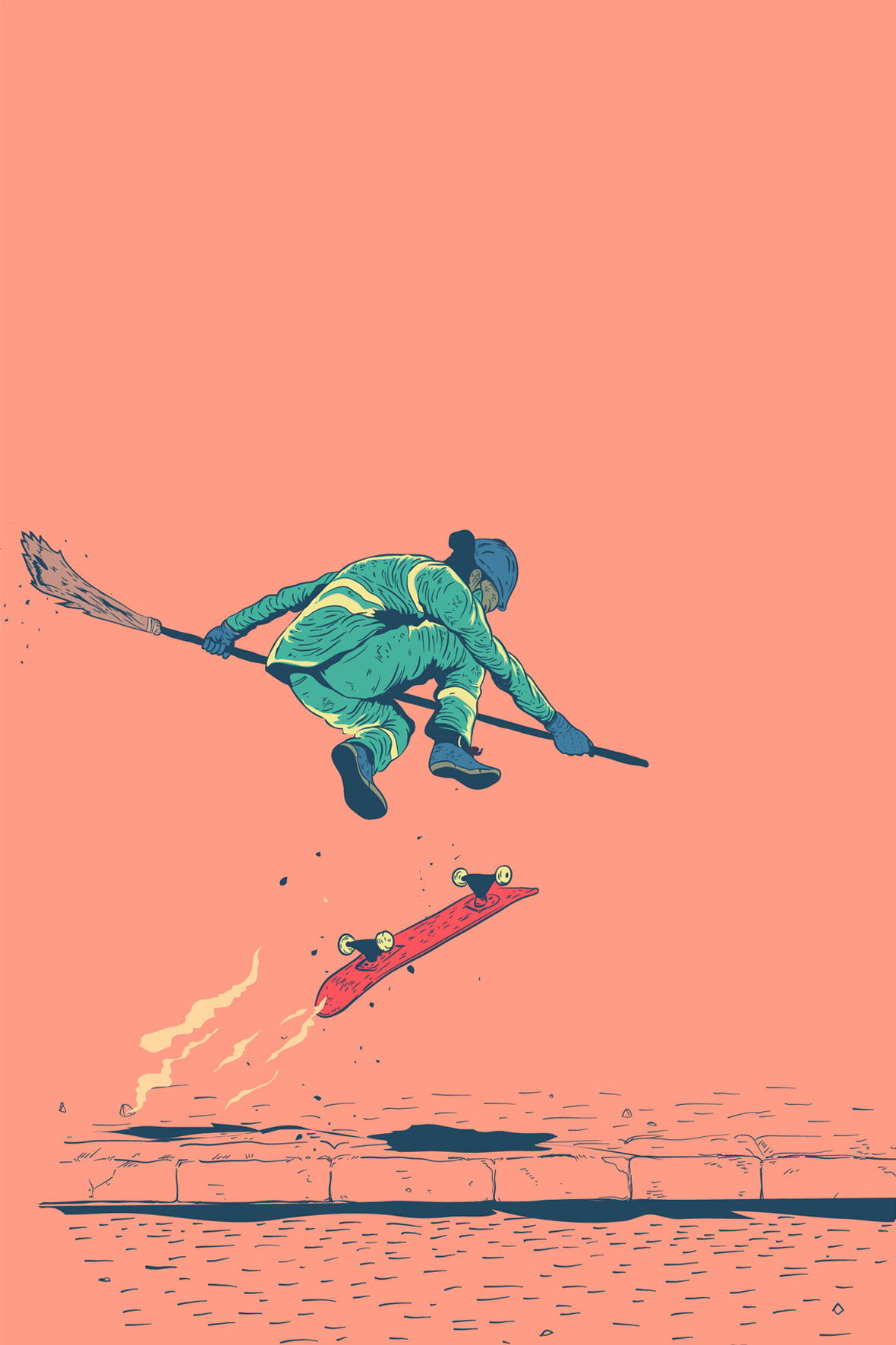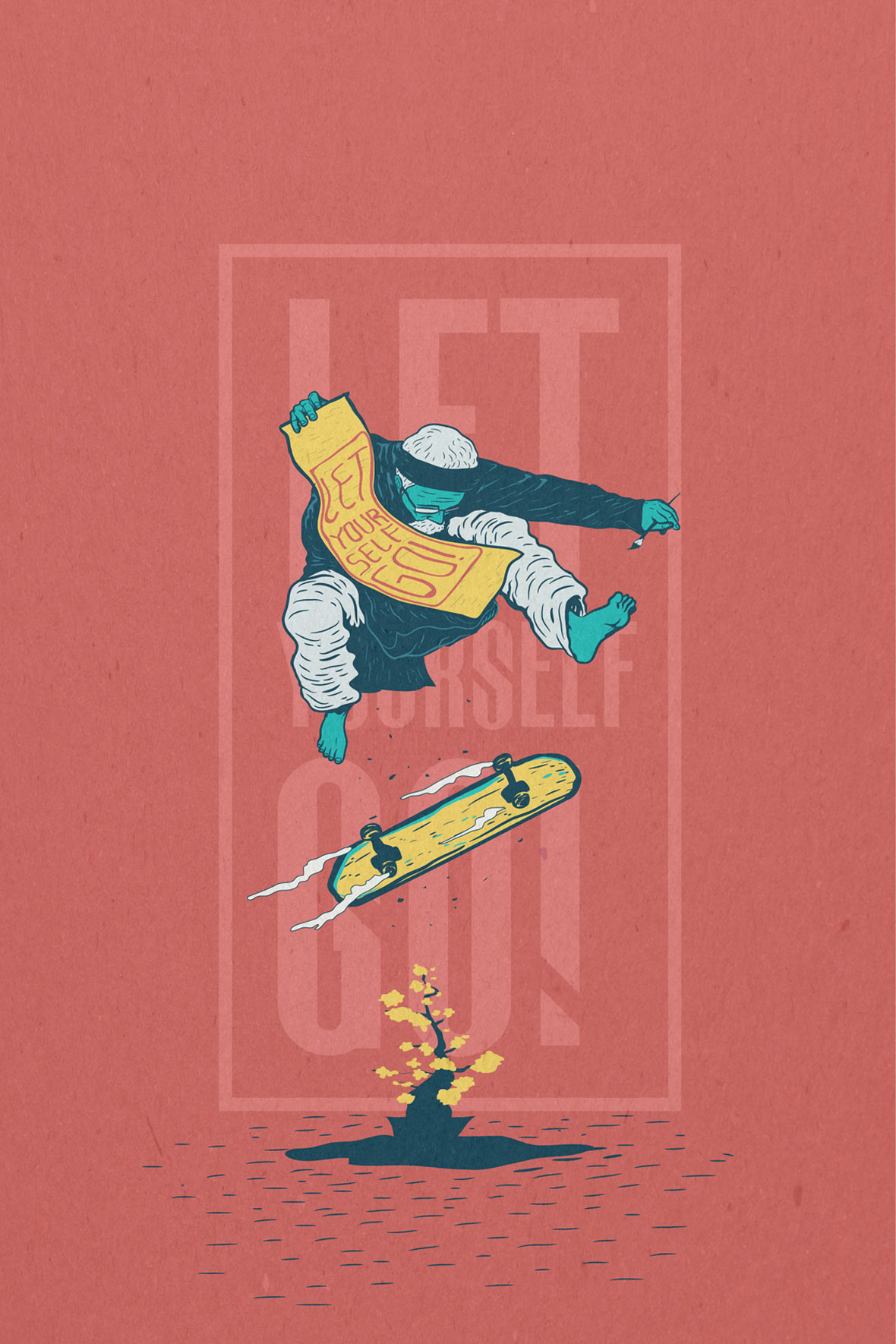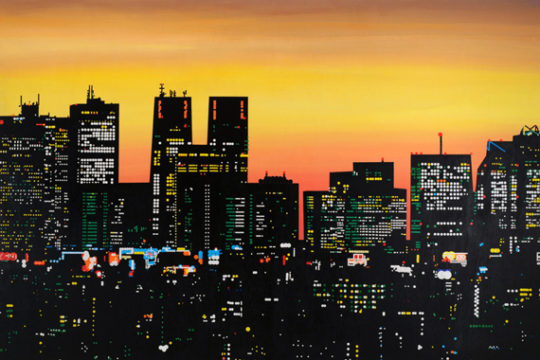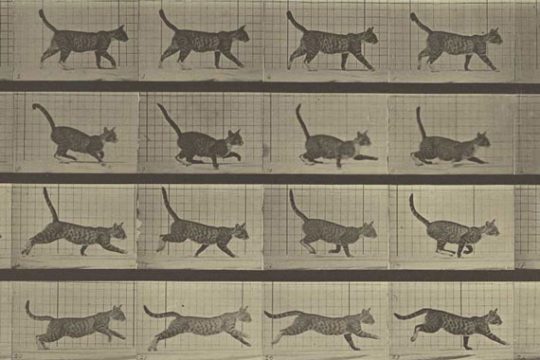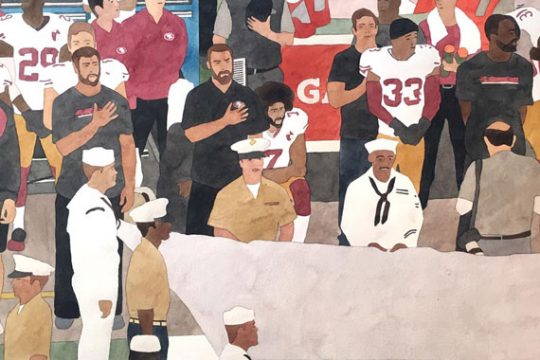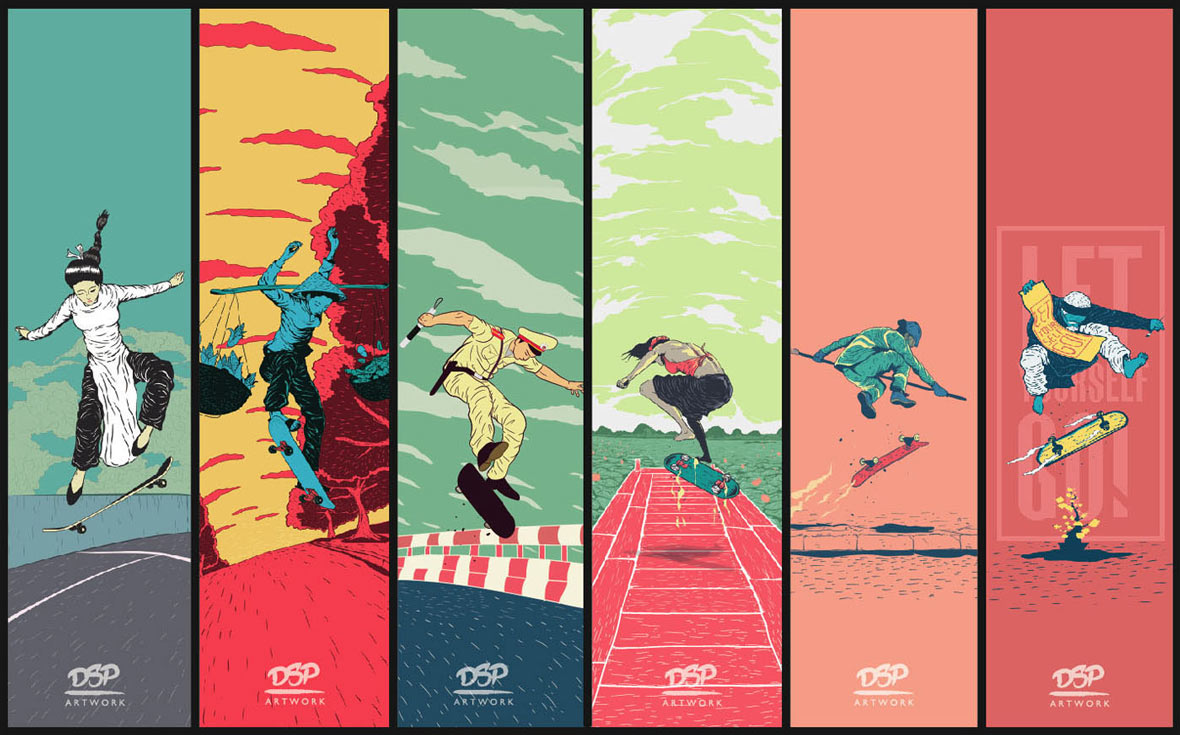
Vietnamese illustrator Dương Giáp finds inspiration from a wide range of influences. His initial interest in visual art dates back to his childhood, when Japanese anime like Doraemon and Naruto left a deep imprint. As he outgrew these shows, a fascination with skateboarding and hip-hop culture took over, eventually steering him into the world of street art. During this time, serendipitous friendships with prominent Vietnamese street artists like LIARBEN and Zunk helped him develop his own artistic sensibilities. Today, while Dương is best known for his illustrations, he still enjoys spending his free time creating murals around his hometown of Haiphong, in Northern Vietnam.
越南插画家 Duong Giap 创作灵感的来源十分广泛。他对视觉艺术的兴趣源自童年,小时候看的《机器猫》和《火影忍者》等日本动漫给他留下了深刻的印象。然而,随着年纪渐长,过了看卡通片的年纪后,慢慢他迷恋上滑板和嘻哈文化,并最终踏入了街头艺术的世界。在此期间,偶然结识 LIARBEN 和 ZUNK 等越南著名街头艺术家,更是让他逐渐发展出自己的艺术情感。现在,Giap 凭借自己的插画作品而为人熟知,但他依然喜欢趁空闲时间,在他的家乡——越南北部的海防市创作壁画。
In 2017, Dương was invited to take part in The Singularity Plan, a fledgling art platform in Guangzhou, China. The initiative, founded by Chinese illustrator Tony Cheung, invites emerging artists from all over Asia and presents an opportunity for them to showcase their work.
2017 年,Duong Giap 受邀参加了奇点计划,这是一个在中国广州刚刚起步的艺术平台。该活动由中国插画家张朝阳创立,邀请了来自亚洲各地的新艺术家,并为他们展示自己的作品提供了机会。
What makes Dương’s work stand out among his many talented peers is the way he plays with the contrasts in modern society. Throughout his work, he seems to tease at the friction between an encroaching globalization and the traditions that remain strong in Vietnam.
“I love joining street culture with Vietnamese folk culture, because they’re essentially totally different things,” he explains. “One has attitude and a strong personality, while the other is traditional and polite. Bringing street culture attitudes to Vietnamese imagery creates a contrast.”
在奇点计划中,Giap 的作品从众多才华横溢的艺术家中脱颖而出,这一点可以归功于他对现代社会的关注。他在作品中调侃着全球化观念的侵入与越南传统观念之间的冲突。
“我喜欢将街头文化和越南民间文化融合在一起,因为它们本质上是完全不同的东西。”他解释道,“前者很有态度、个性很强,而后者则是传统的、谦恭有礼的。将街头文化的态度融入越南传统意象时,就能产生化学反应。”
Despite the positive reception of his exhibition at The Singularity Plan, Dương remains critical of his own works, especially his earlier illustration. While he invested a great deal of thought and time into his earlier pieces, much of the work was tainted by negativity.
“I used to be a negative person a year ago,” he says. “And I always found inspiration in negative ideas in the society around me, because I was struggling with my life. By now I’ve grown a lot. I’ve started living my life with more balance and trying to be a better person than before.”
尽管作品在奇点计划的展览上大获好评,但 Giap 仍会不断反思,特别对是他之前的插图。虽然在自己早期作品中也投入了大量的思考和时间,但在他看来,大部分的作品都被他在生活中所经历的一些负能量所污染了。
他说:“一年前的我曾经是一个消极的人,总是会从社会中发生的负面事件中找灵感,因为那时我自己的生活也处于一个低谷时期。现在,我已经长大了很多,开始真正地生活,努力成为一个更好的人。”
Some of Dương’s works have prompted criticism, while others have earned him mixed reactions. One piece depicting a school shooting was both lauded and attacked on social media. Compared to his more defining works like Let Yourself Go, this piece was much darker, as if it were an indictment of violence in society.
Concerned about spreading negativity to young fans, he eventually deleted the image from his social media.
“I was getting a lot of attention for making negative illustrations, so I kept making them, getting deep in it,” he says. “But then recently I had a chance to spend two months in Saigon. My experience there helped me change and made me want to be a better person. Since then, in this new phase of my life, I want to create more positive, light-hearted art that can hopefully inspire the next generation.”
对于他过去一些有争议性的作品,则招来了褒贬不一的评价。譬如其中一幅描绘校园枪击案的作品,在社交媒体上,既有人点赞也有人抨击。和《Let Yourself Go》(《放飞自我》)以及他的其它代表性的作品一样,这幅作品的风格更黑暗,就像是对现代社会的控诉。
最后,因为担心这幅插画会给年轻粉丝传播负能量以及他对未来的悲观主义,他最终将这幅画从自己的社交媒体中删除了。
“因为这些负能量的插画,我获得了很多关注,于是就越画越多,甚至有点陷了进去。”他说,“直到四个月前,我去西贡生活了两个月。在那里的经历改变了我,让我想成为一个更好的人。从那时起,在我人生的这个新阶段,我想创造出更多积极、轻松的艺术,希望能激励下一代人。”

